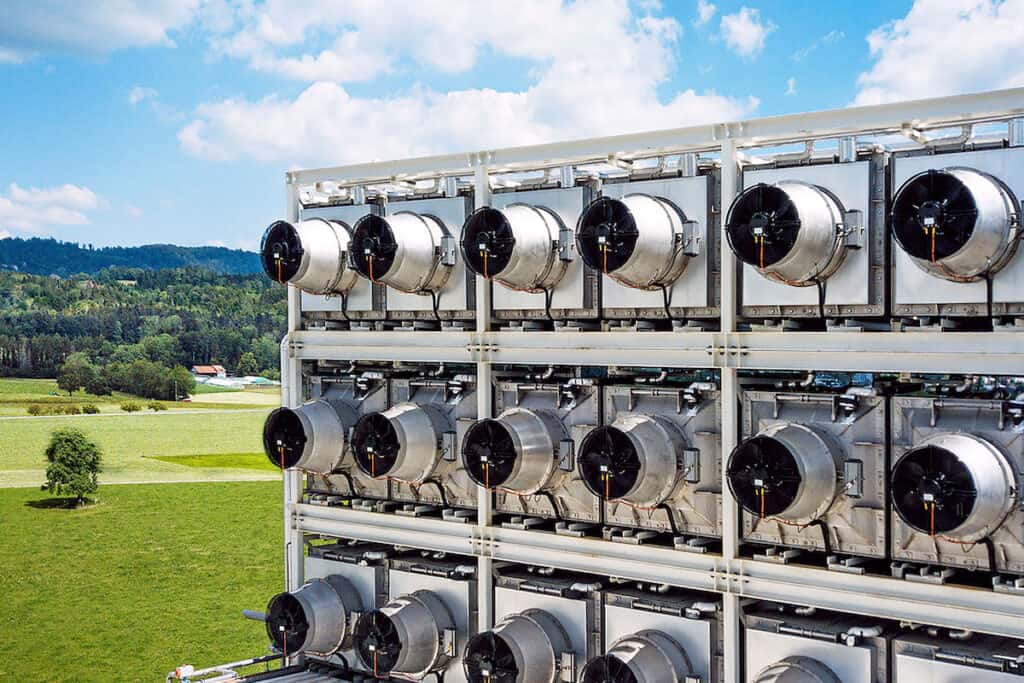
In this SustMeme Guest Post, Daniel Kitwa, Deputy Director, Energy Access Finance, at GreenMax Capital Group, asks: Is carbon capture one of the scalable solutions that can help us solve the problem of global emissions reductions?
DK: Since the onset of human civilisation, technological advancement has often proved to be the saving grace for various industries. For instance, the steam engine was a better alternative to horse travel; and smartphones a superior experience to landline. So, the question to ask is whether there is a scalable technology play in existence, or in prospect, that could help to address carbon emission reductions and overall net zero goals?
Difference between climate mitigation and adaptation
To begin with, when it comes to tackling climate risks, it is important to understand what problem we are trying to address. Simply put, are we aiming for climate mitigation, or adaptation?
So, the logical first step in this nuanced climate discourse is to establish some technical definitions.
In defining Climate Mitigation, the European Environment Agency, explains this term as describing any efforts directed towards making the impacts of climate change less severe by preventing or reducing GHG emissions; whereas Climate Adaptation, is the process of adjusting to the current and future effects of climate change.
Examples of climate mitigation technologies might include:
- Renewable energy technologies, such as solar panels, wind turbines, and hydropower, which can help to reduce greenhouse gas emissions by providing low-carbon alternatives to fossil fuels;
- Carbon capture and storage (CCS) technologies, which capture carbon dioxide emissions from power plants and industrial facilities and store them underground, reducing their contribution to atmospheric CO2 levels; or
- Energy efficiency technologies, which help to reduce the amount of energy needed to power buildings, vehicles, and industrial processes, reducing emissions in the process.
By contrast, examples of climate adaptation technologies might include:
- Flood protection systems, such as flood walls, levees, and pumps, which can help to protect communities from rising sea levels and more frequent and severe flooding;
- Drought-resistant crops and irrigation technologies, which can help to increase crop yields and reduce water use in areas prone to drought; or
- Early warning systems for extreme weather events, such as hurricanes and typhoons, which can help to reduce the loss of life and property damage caused by these events.
In this Guest Blog, we shall be looking at climate mitigation, by way of carbon capture.
Carbon capture methodologies and technologies
The primary carbon capture methodologies and technologies are:
- Direct Air Capture (DAC); and
- BioEnergy Carbon Capture Storage (BECCS).
1. Direct Air Capture (DAC): DAC is a technology that involves using large machines to remove carbon dioxide (CO2) directly from the air. The goal of DAC is to help mitigate the negative effects of climate change by reducing the amount of CO2 in the atmosphere.
There are a few different approaches to DAC, but they all involve using chemical processes to bind CO2 from the air, and then storing it in a secure location, such as underground.
Arguments for DAC Technology:
- DAC technology can capture CO2 from any location, not just from a specific point source such as a power plant or factory — this means it has the potential to significantly reduce the overall amount of CO2 in the atmosphere;
- DAC can be used in conjunction with other carbon capture methods, such as those employed at power plants, to capture even more CO2;
- DAC has the potential to prove a long-term solution for storing CO2, as the captured emissions can be locked away in underground geological formations for hundreds of years.
Arguments Against DAC Technology:
- In today’s market, DAC technology remains relatively expensive and requires a lot of energy to operate, making it cost-prohibitive for more widespread use, at present;
- The chemical reactions used in DAC technology produce by-products, some of which could be harmful to the environment, if not properly managed;
- There is still a lot of uncertainty surrounding long-term storage of CO2 using DAC technology, with more research needed to ensure captured CO2 will not escape or cause any negative environmental impacts.
2. Bioenergy with Carbon Capture and Storage (BECCS): BECCS is a process that involves producing bioenergy, such as biofuels, or electricity from biomass, then capturing and storing the carbon dioxide (CO2) emitted during the process. The captured CO2 is again stored in underground geological formations, such as depleted oil and gas fields, to prevent it from being released into the atmosphere.
Biomass is organic matter that can be used as a source of energy. It can be employed to generate electricity, heat, and transportation fuels. As the plants used to create the biomass also absorb CO2 from the atmosphere as they grow, they therefore act as a sink for atmospheric carbon. This process is known as carbon sequestration.
When biomass is burned, however, sequestered carbon is released into the atmosphere in the form of CO2.
So, in capturing and storing that CO2, the goal of BECCS is to create a source of renewable energy that is not only carbon neutral, but also results in net negative carbon emissions.
This means that the bioenergy produced through BECCS removes more CO2 from the atmosphere than is emitted during the production process.
Arguments for BECCS:
- BECCS has the potential to remove large amounts of CO2 from the atmosphere and help mitigate climate change;
- It can be used to offset emissions from sectors that are difficult to decarbonise, such as heavy industry and aviation;
- It can be paired with renewable energy sources, such as solar or wind power, to create a fully renewable electricity system.
Arguments Against BECCS:
- BECCS is still a developing technology and there are questions about its feasibility and scalability;
- It requires large amounts of land and water, which could lead to competition with requirements for food production and other land uses;
- The process of capturing and storing CO2 can be energy-intensive and may not be cost-effective;
- Again, there are concerns about long-term stability of CO2 storage sites, as there remains a perceived risk that the captured CO2 could be released back into the atmosphere.
Capital, credibility and public policy
For climate tech solutions to scale in the long term, a number of components need to work in concert.
Firstly, capital should not only be patient, but adequate, as we are talking about billions, or potentially even trillions, of dollars here.
In terms of transparency and credibility, data tracking also needs to be error-proof — so any climate mitigation or adaptation claims are easily verified with consensus-driven protocols and methodologies.
One way to do this might be through the democratisation of data-tracking projects on blockchain layers to invite the crowdsourcing of quality assurance.
Lastly, public policy should be used to unlock private-sector participation. Ultimately, there is a gaping hole that technology can help fill to achieve a low-carbon global environment, or even a net-zero scenario.

Daniel Kitwa is a climate and impact-focused investment professional with a decade of experience in sustainable energy, finance, and international development He specialises in project finance, multi-asset class investments, deal-risk assessment and structuring, financial modelling, business model advisory, technical assistance, project design and implementation. Daniel has worked for multi-million-dollar climate fund managers, consulting firms and donor programmess across Africa to unlock low carbon financing and policy solutions. Some of the organisations include GreenMax Capital Advisors, CEI Africa, Africa Enterprise Challenge Fund (ACEF), Intellecap, Africa Mini-grid Developers Association (AMDA), Mirova-SunFunder amongst others.
Further Reading:
- More from the European Environment Agency on the difference between climate adaptation and mitigation;
- More on the Climeworks DAC plant in Switzerland (pictured above);
- Also on SustMeme, Iceland milestone in carbon capture and storage;
- Also on SustMeme, Carbon offset prices could jump 50-fold by 2050;
- Also on SustMeme, Top 5 tech disrupting the energy industry in 2021;
- Also by Daniel Kitwa on SustMeme, Guest Blog: Time for the Chief Sustainability Officer to step up?
You can check out the full archive of past Guest Blog posts here.
Would you like to Guest Blog for SustMeme? For more info, click here.
SUSTMEME: Get the Susty Story Straight!





